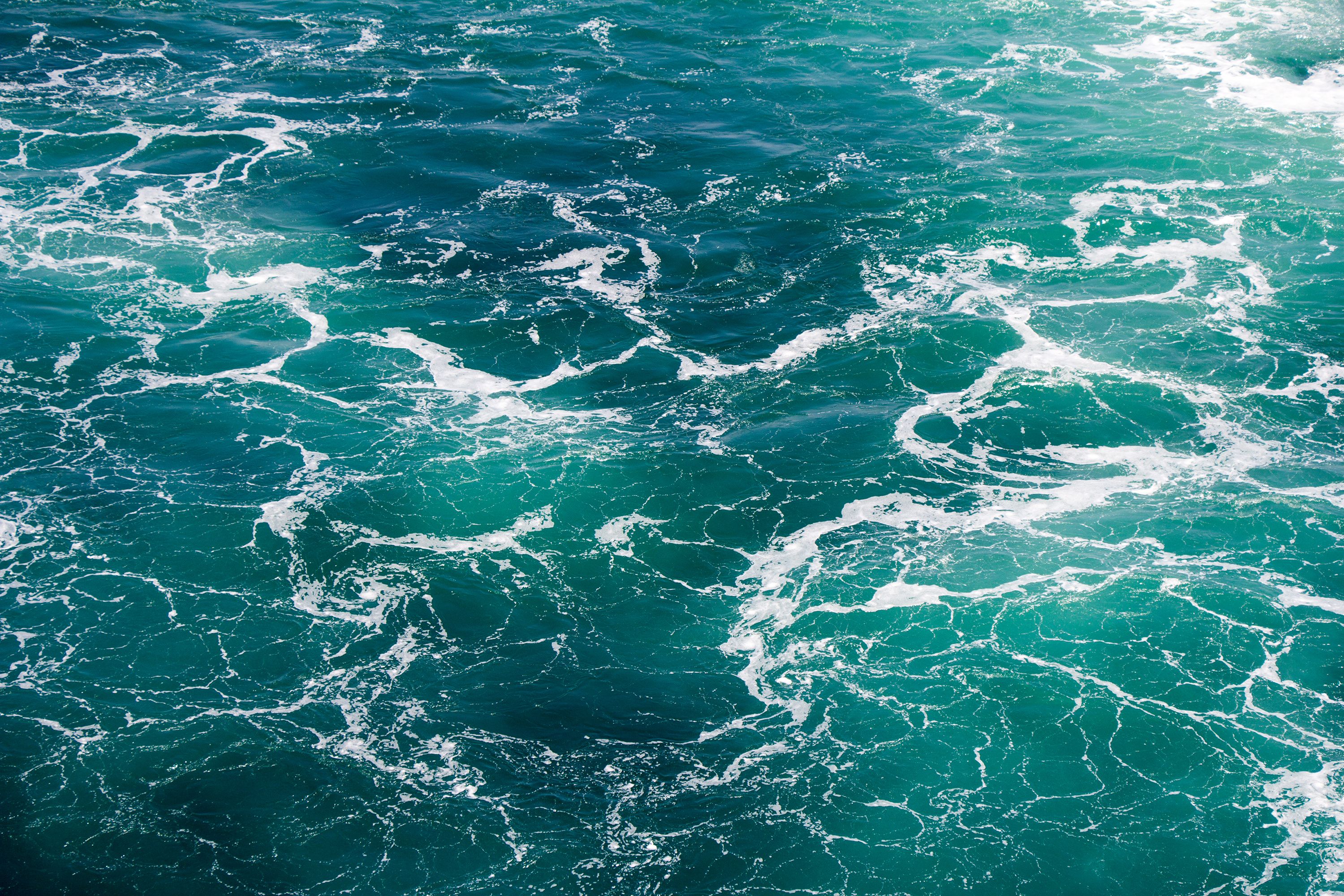Spanish Researchers Develop Method for Ultra-Trace Mercury Detection in Seawater
Researchers describe a new method for the ultra-trace determination of mercury in seawater using vortex-assisted liquid-liquid micro-extraction (VALLME) and atomic absorption spectrometry (AAS).
Researchers at the University of Coruña in Coruña, Spain have developed a new analytical methodology for the detection of ultra-trace levels of mercury in seawater. The research, published in the Spectrochimica Acta Part B: Atomic Spectroscopy journal, describes a technique based on a vortex-assisted liquid-liquid micro-extraction (VALLME) for the extraction and enrichment of total mercury from seawater (1).
Turquoise green Seawater with sea foam as background | Image Credit: © smuki - stock.adobe.com

The method involves the derivatization of mercury with ammonium pyrrolidine dithiocarbamate (APDC) and quantification by atomic absorption spectrometry (AAS) using a Direct Mercury Analyzer DMA-80 spectrometer based on thermal desorption. The researchers explored various variables affecting mercury derivatization and VALLME extraction, including pH, APDC concentration, extraction (vortex) time, acceptor solvent (hexane) volume, and ionic strength of the donor phase.
VALLME is a sample preparation technique used to extract and enrich total mercury from seawater. The technique involves the addition of ammonium pyrrolidine dithiocarbamate (APDC) to the seawater sample to form a complex with mercury ions. This complex is then extracted into a small volume of organic solvent (hexane) through vigorous vortexing. After separation, the organic phase is collected and analyzed for mercury content using atomic absorption spectrometry (AAS). The VALLME method is highly sensitive, precise, and capable of extracting mercury at ultra-trace levels from seawater samples.
The researchers achieved an enrichment factor (EF) and extraction recovery (ER) of 51 and 76 ± 5.3%, respectively, from just 20 mL of seawater (at pH = 3) using an APDC concentration of 0.125 mmol/L, vortex time and acceptor solution volume of 4 min and 300 μL, respectively. NaCl addition had no effect on mercury determination. The VALLME-AAS method was highly sensitive, with a quantification limit (QL) of 10.3 ng/L, with relative standard deviations (RSDs) of less than 14%.
The developed procedure was tested by analyzing different sea water (NASS-7) and estuarine water (SLEW-3 and BCR-505) certified reference materials. Finally, mercury levels between 34–172 ng/L were assessed in several seawater samples.
This new method provides a more sensitive and precise way of detecting ultra-trace levels of mercury in seawater. According to Jorge Moreda-Piñeiro, the main author of the study, this method could be useful in monitoring the presence of mercury in the marine environment, as well as in assessing the impact of human activities on the marine ecosystem (1).
Reference
(1) Conchado-Amado, P.; Sánchez-Piñero, J.; Turnes-Carou, I.; López-Mahía, P.;Muniategui-Lorenzo, S. Ultra-trace mercury determination in seawater after vortex-assisted liquid-liquid micro-extraction. Spectrochim. Acta Part B At. Spectrosc. 2023, ASAP. DOI: 10.1016/j.sab.2023.106683
Microplastics Widespread on Catalan Beaches, Study Finds
March 28th 2025In a recent study published in Marine Pollution Bulletin, a team of researchers from several Spain and Portugal universities and institutions (Rovira i Virgili University, Universitat de Barcelona, University of Porto, and Institut d'Investigació Sanitaria Pere Virgili (IISPV) assessed microplastic (MP) contamination along the Mediterranean coastline.
Can Fluorescence Spectroscopy Evaluate Soil Dissolved Organic Matter Dynamics?
February 20th 2025A new study published in Chemical Engineering Journal by researchers from Northeast Agricultural University in China reveals that biochar aging, influenced by environmental factors like UV exposure and wet-dry cycles, alters dissolved organic matter composition and affects its effectiveness in remediating cadmium-contaminated soil.